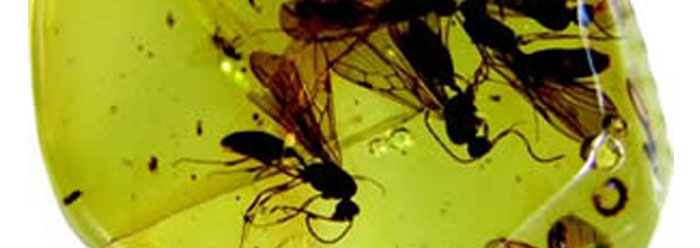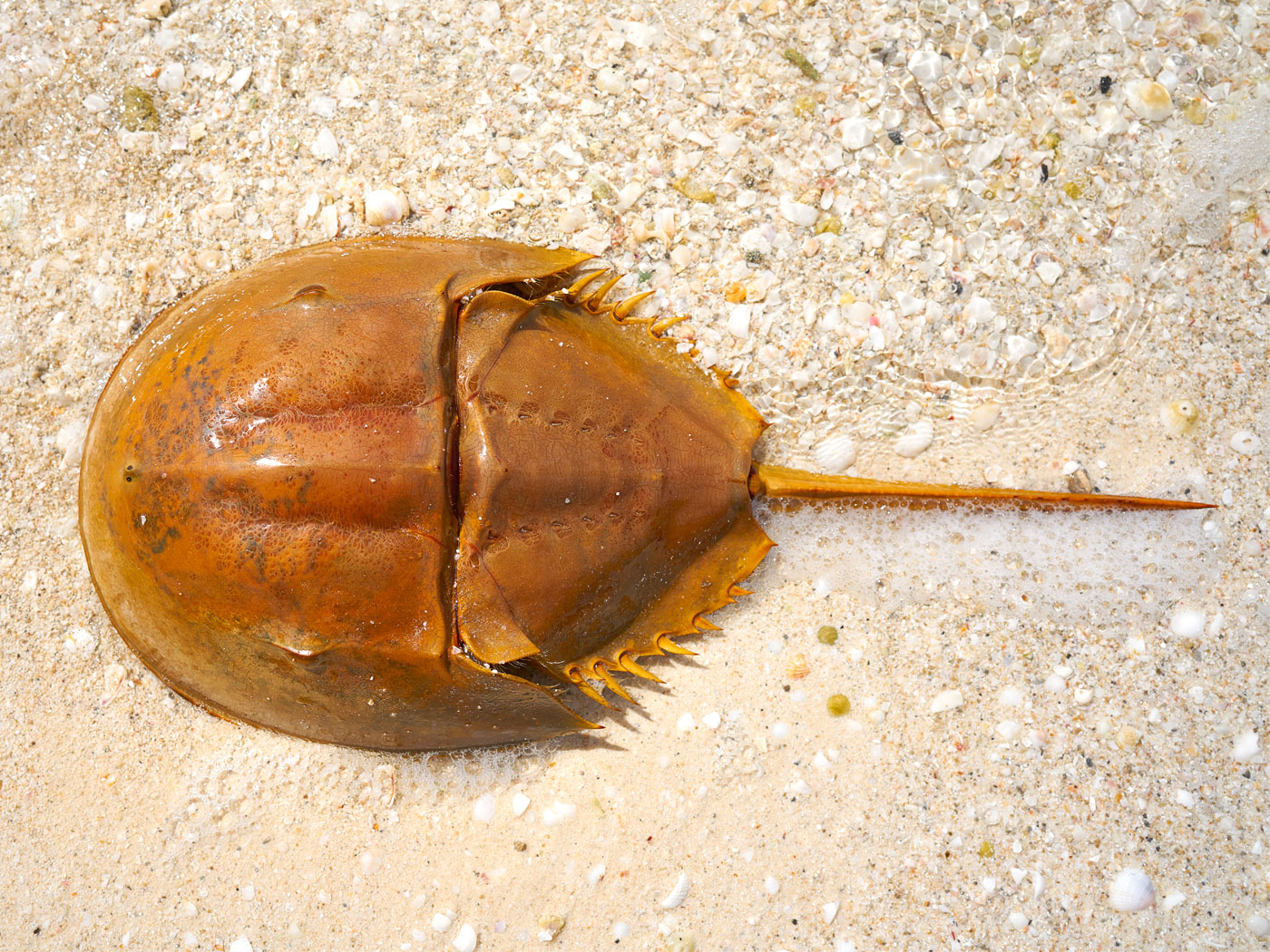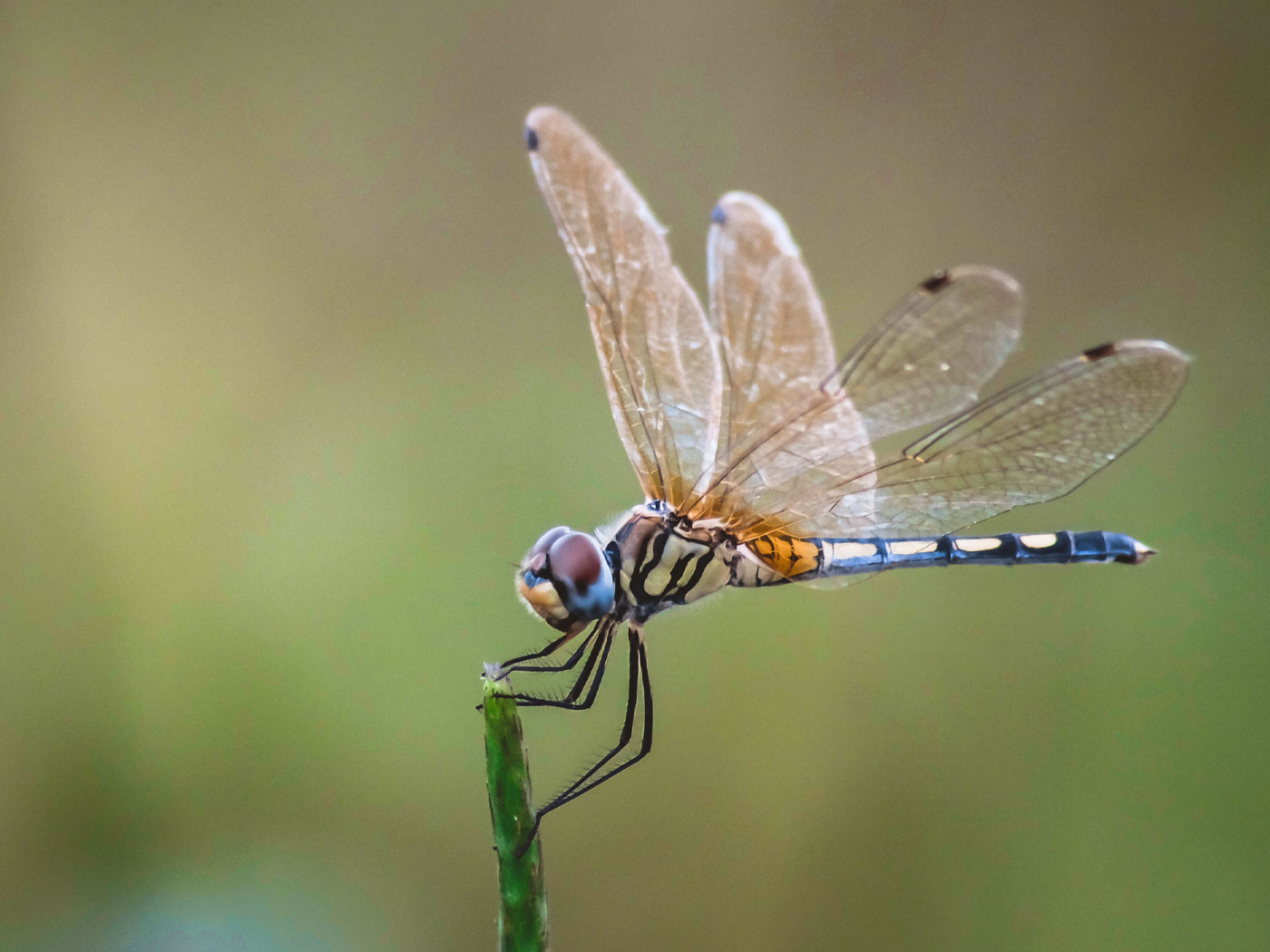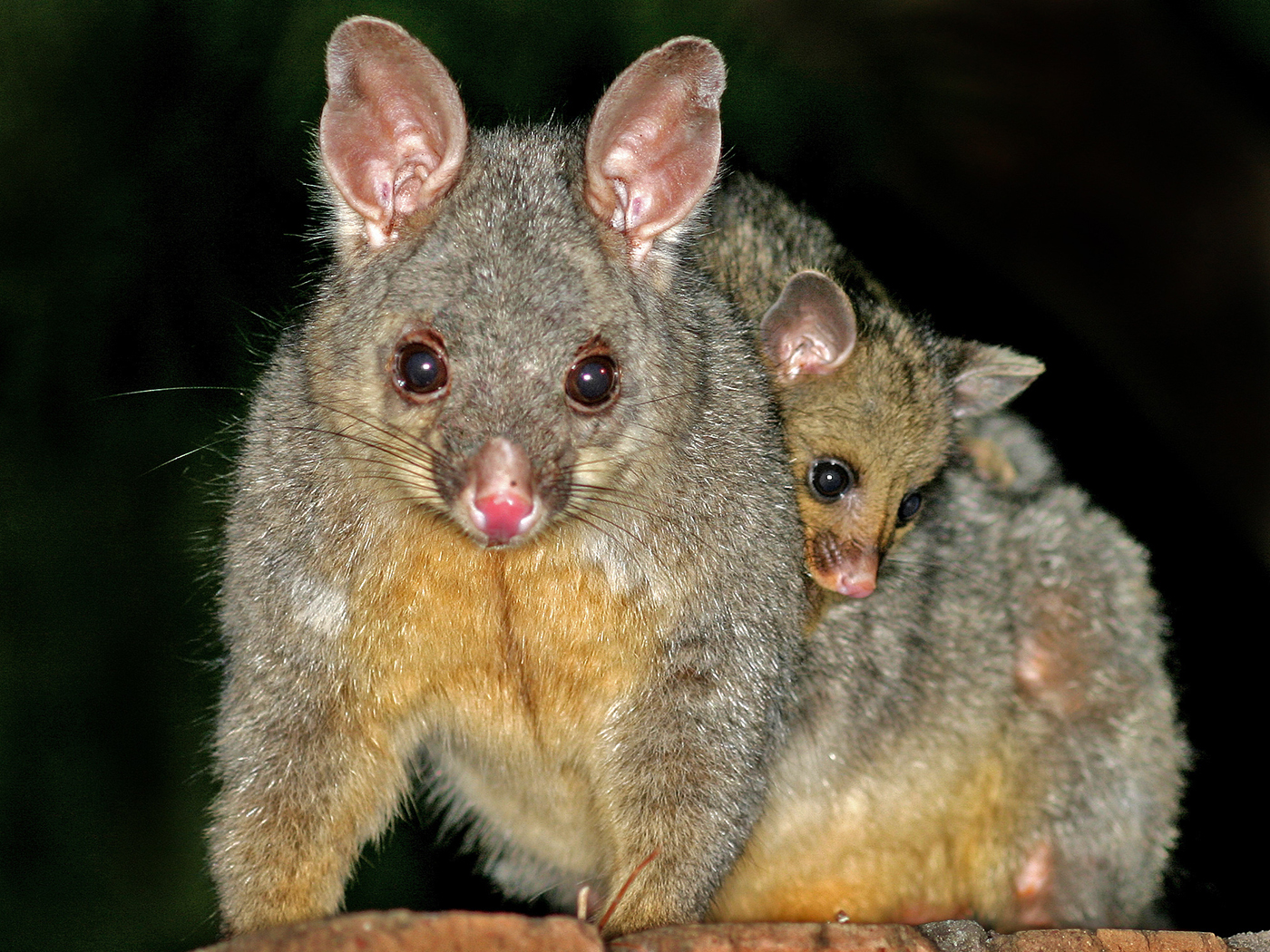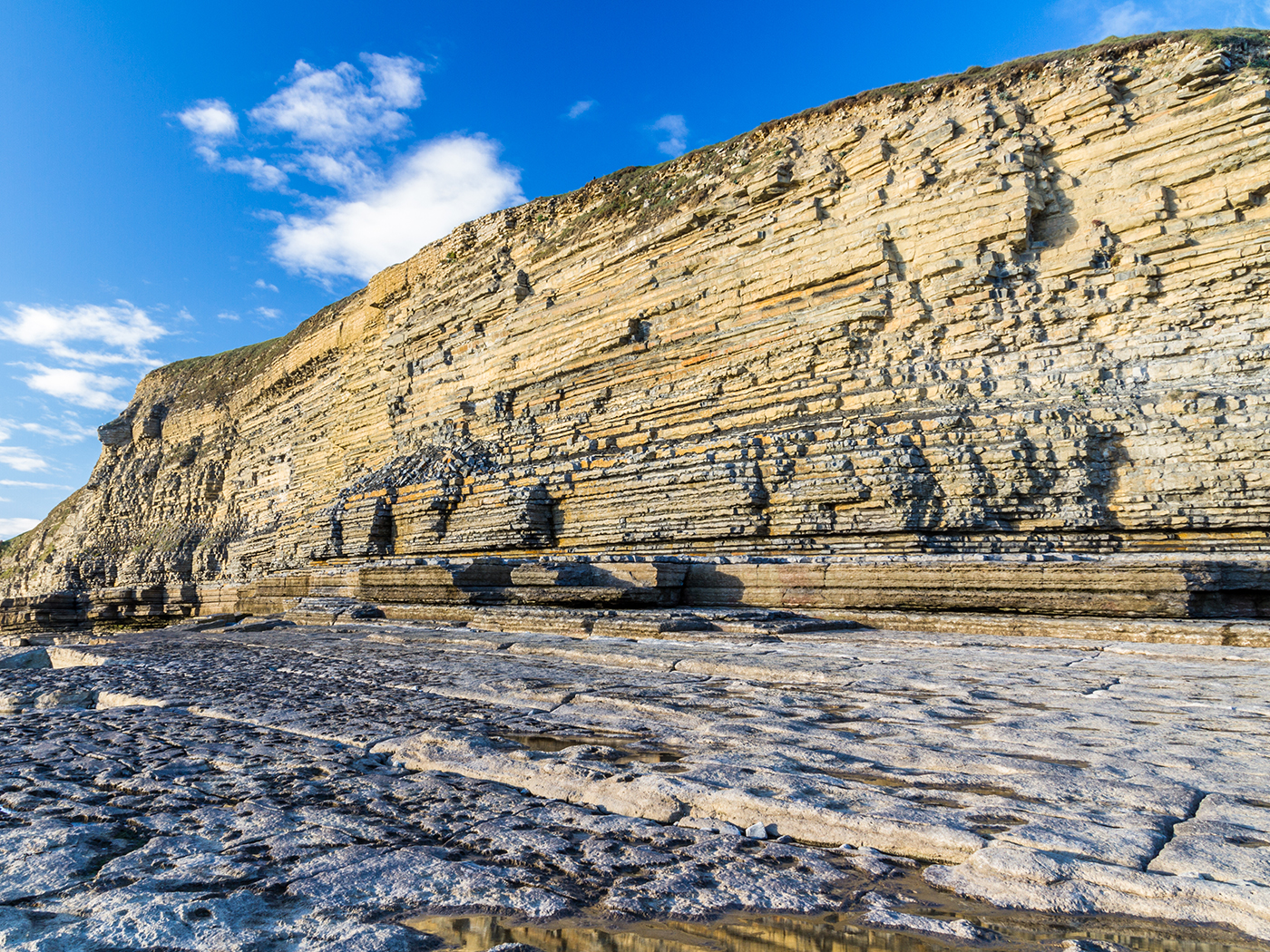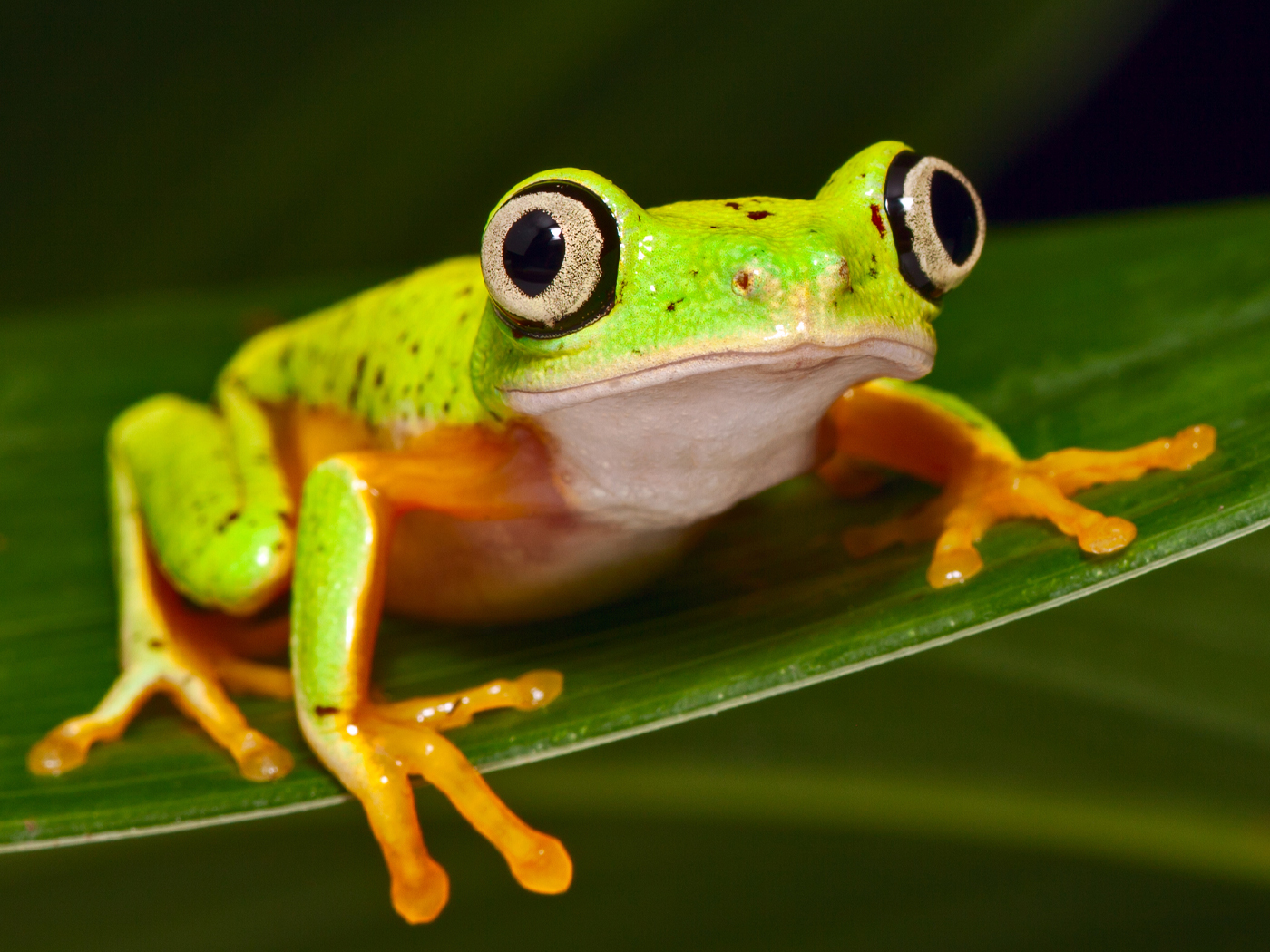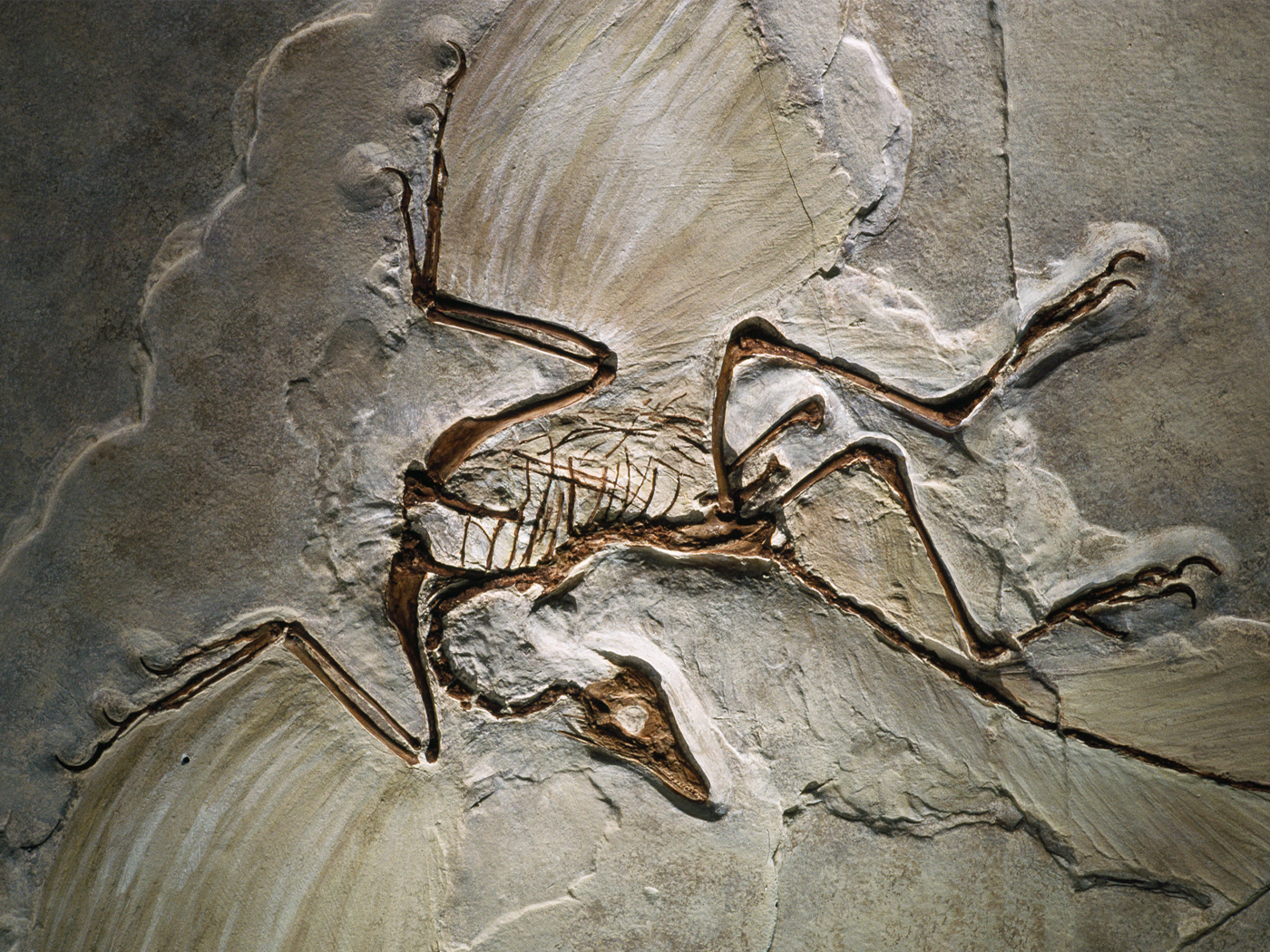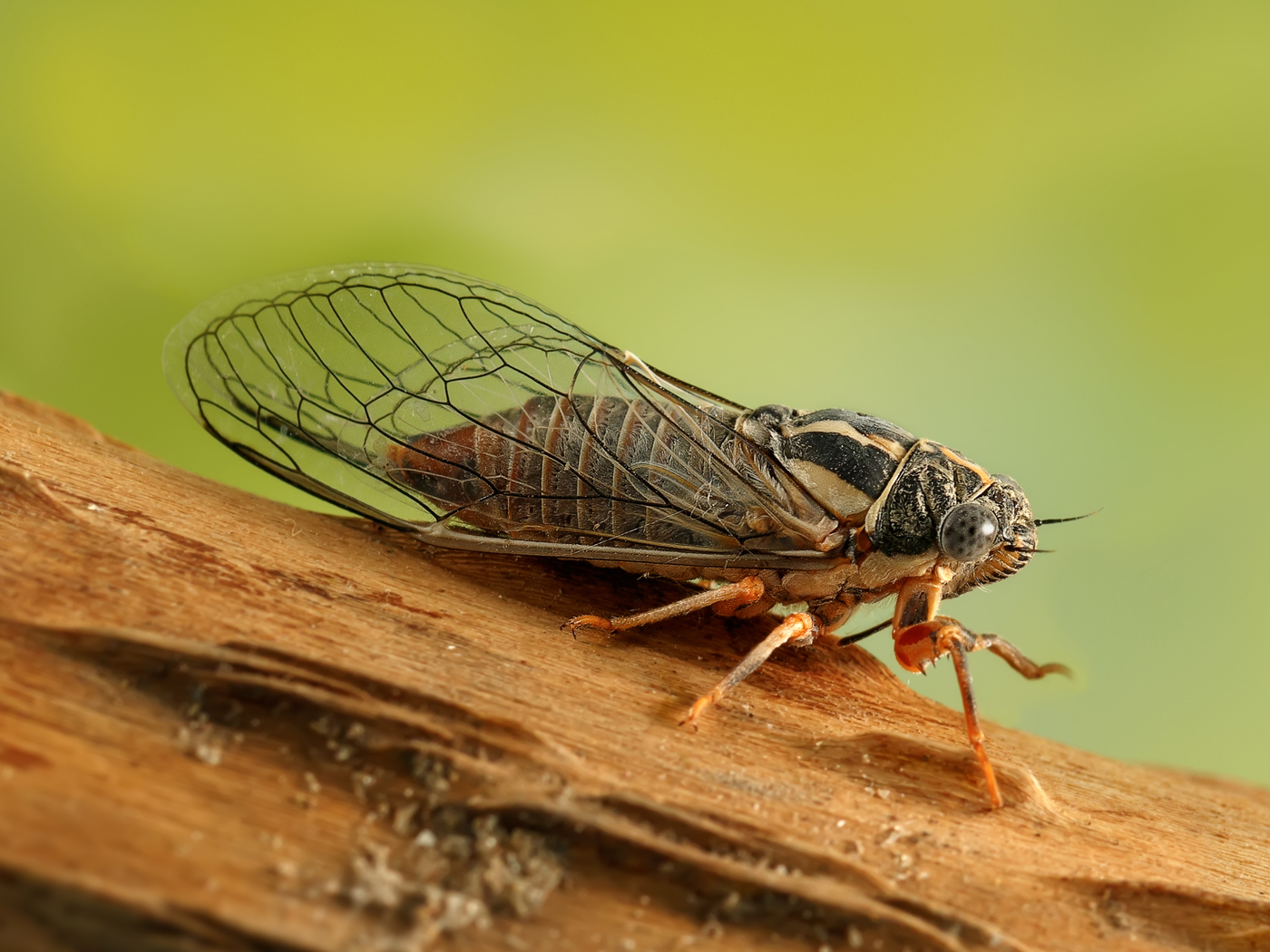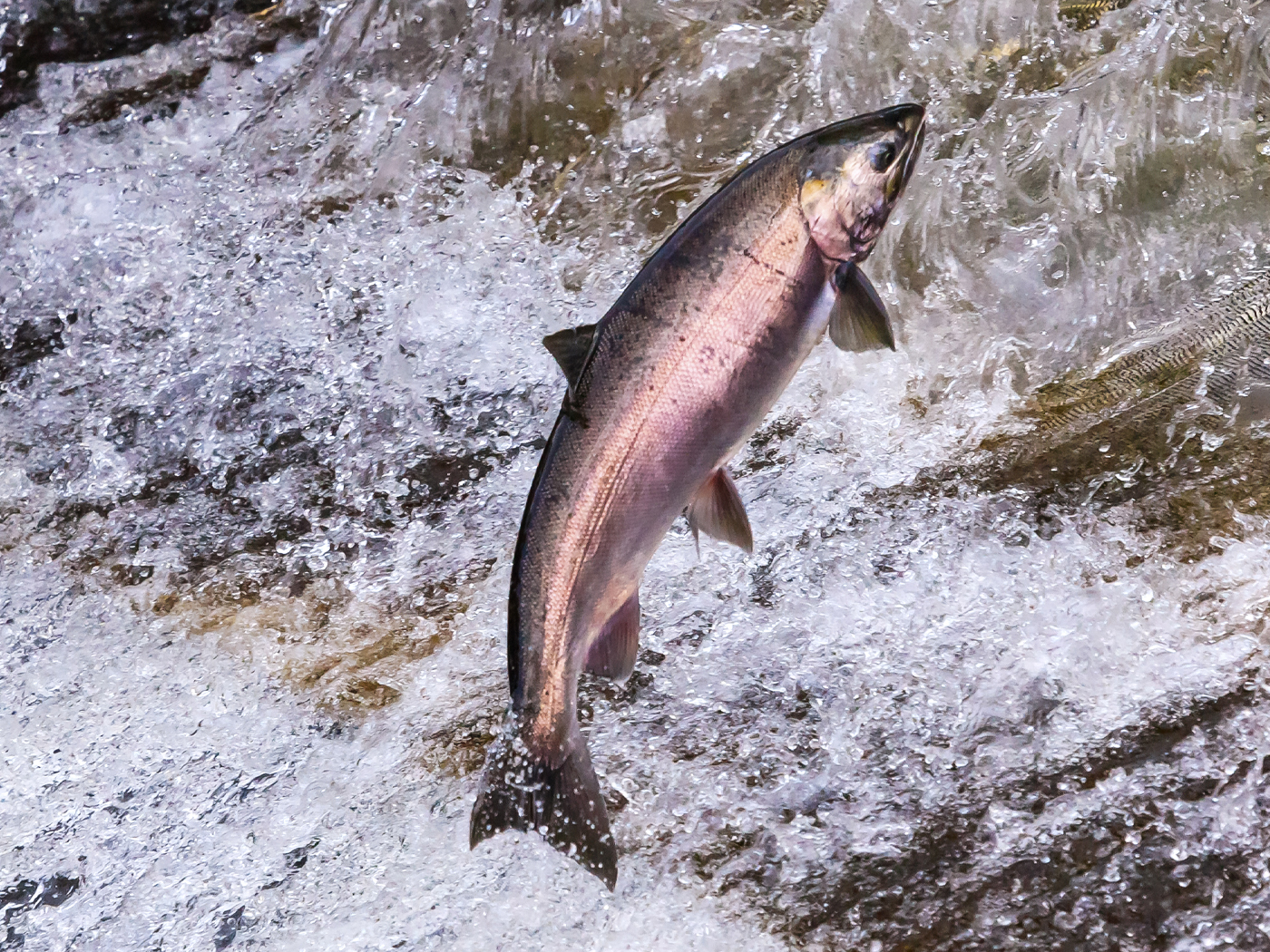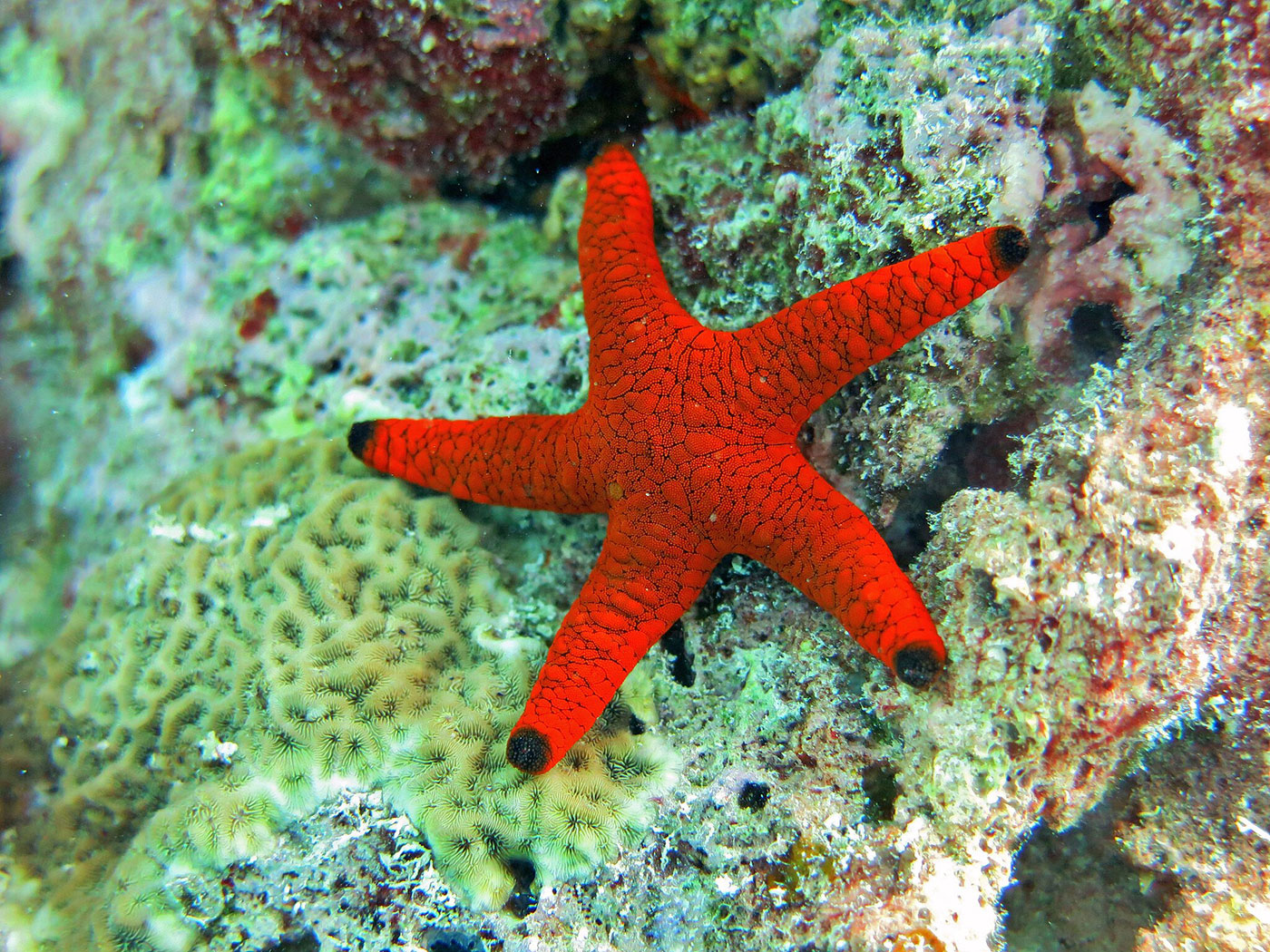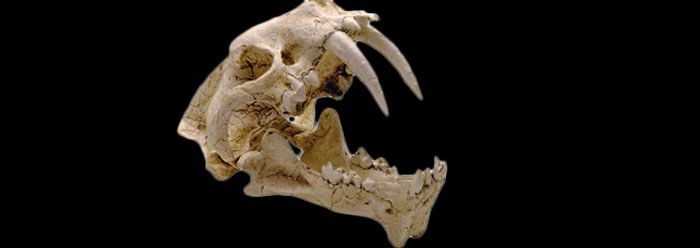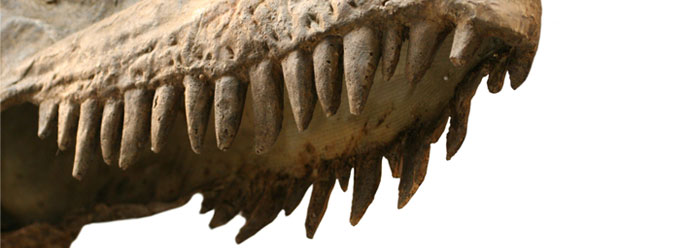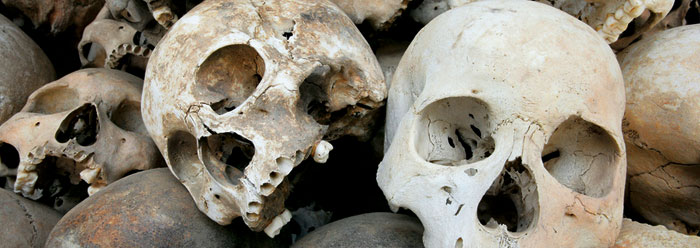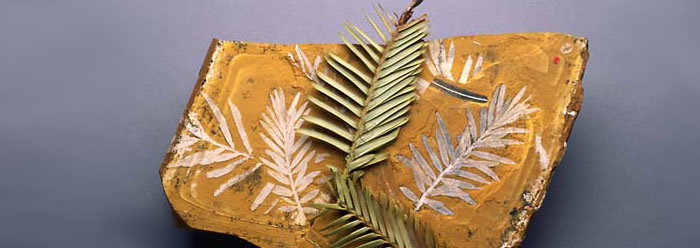
Fossils Show Stasis and No Transitional Forms
The fossil record reflects the original diversity of life, not an evolving tree of increasing complexity. There are many examples of "living fossils," where the species is alive today and found deep in the fossil record as well.
According to evolution models for the fossil record, there are three predictions:
1. wholesale change of organisms through time
2. primitive organisms gave rise to complex organisms
3. gradual derivation of new organisms produced transitional forms.
However, these predictions are not borne out by the data from the fossil record.
Trilobites, for instance, appear suddenly in the fossil record without any transitions. There are no fossils between simple single-cell organisms, such as bacteria, and complex invertebrates, such as trilobites.
Extinct trilobites had as much organized complexity as any of today’s invertebrates. In addition to trilobites, billions of other fossils have been found that suddenly appear, fully formed, such as clams, snails, sponges, and jellyfish. Over 300 different body plans are found without any fossil transitions between them and single-cell organisms.
Fish have no ancestors or transitional forms to show how invertebrates, with their skeletons on the outside, became vertebrates with their skeletons inside.
Fossils of a wide variety of flying and crawling insects appear without any transitions. Dragonflies, for example, appear suddenly in the fossil record. The highly complex systems that enable the dragonfly's aerodynamic abilities have no ancestors in the fossil record.
In the entire fossil record, there is not a single unequivocal transition form proving a causal relationship between any two species. From the billions of fossils we have discovered, there should be thousands of clear examples if they existed.
The lack of transitions between species in the fossil record is what would be expected if life was created.
Evidence for Creation › Evidence from Science › Evidence from the Earth Sciences › Fossils Reflect Life's Original Diversity» Next
Related Articles
*Dr. Clarey is Research Associate at the Institute for Creation Research and earned a Ph.D. in geology from Western Michigan University. [body_edit] =>Evolutionary scientists continually search for evidence to support their claims of an evolutionary relationship between birds and dinosaurs. Their most recent attempt involves a new bird fossil named Fukuipteryx prima, found in Japan.1
[typeID] => 9 [visible] => t [pdf] => [publishURL] => new-bird-fossil-doesnt-fit-evolutionary-story [publishDate] => 2019-11-21 [authorAsterisk] => t [domainID] => 1 [publication] => [volume] => [issue] => [page] => [author] => Tim Clarey, Ph.D. ) -->
Publishing in Communications Biology, Takuya Imai and his team, from Fukui Prefectural University, described the new bird species they extracted in 2013 from Lower Cretaceous rocks in central Japan.1
The scientists found that the new bird species was quite similar to the so-called “first bird,” the Archaeopteryx, found in Upper Jurassic rocks in southern Germany. It had a similarly large wishbone, an unfused pelvis and claws on its wings like Archaeopteryx. But unexpectedly, the new Japanese specimen had a well-developed pygostyle instead of a long bony tail.2 A pygostyle is a fused bony plate at the end of the backbone that supports tail feathers in living birds.
This combination of so-called “primitive” bird features found on both Fukuipteryx and Archaeopteryx (e.g., claws on the wings) along with the more “modern” pygostyle on F. prima has ruffled the feathers of evolutionary scientists. It’s simply out of place for their model. But that’s not the worst of it.
Gizmodo reported the team’s shock, “One observation came as a big surprise to the researchers. Though the species is the most anatomically primitive bird from the Early Cretaceous, it was found in relatively young sediment [Lower Cretaceous rocks], and more evolutionarily advanced species [Archaeopteryx] have been found in sediment older than the Fukuipteryx fossil.”2 Reportedly, 35 million years older, according to secular age dates.
“We were so surprised that we did the whole analysis again as we thought we did something wrong,” Imai told Gizmodo in an email. But it turned out the same no matter “how many times we checked our data and methods—the result did not change.”2
To explain the fully-developed pygostyle in such a “primitive” bird, the scientists had to resort to the overused story of “multiple episodes of evolution” as a rescuing device.
“Studies of Fukuipteryx indicates that the pygostyle evolved at least twice independently during the evolution of birds, once in the lineage of Fukuipteryx and once in the lineage of modern birds,” explained the paper’s senior author Imai.2
And yet evolution is supposed to be a chance process with its success somehow caused by fortuitous random mutations. What are the odds that the same exact feature could ever evolve twice? And where are the transitional fossils showing the development of a pygostyle? All we find in the rock record are fully-formed pygostyles that abruptly appear on fully-formed birds.
Modern evolutionary science predicts finely graded transitional features from dinosaurs to birds, from lower to upper rock layers. The discovery of several “primitive” features and “modern” features in a bird from Lower Cretaceous rocks is the opposite of what they predicted. It causes evolutionary scientists to have to make unsupported assumptions and unreasonable claims of multiple episodes of evolution. These scientists use speculation to try to explain these unexpected finds.
Creation scientists dispute notions of an evolutionary link between birds and dinosaurs.3 We believe God created birds as separate kinds from the various dinosaur kinds, and on different days of Creation Week. There are no unexpected fossils showing “primitive” features found in the wrong place in the rock record. The great Flood accounts for virtually all fossils, including these extinct birds.
Science doesn’t support the evolution of a pygostyle either once or twice. The fossil record shows that birds of all types, including F. prima and Archaeopteryx, appear fully-formed and without ancestors, just like Genesis teaches. This new fossil doesn’t surprise creation scientists in the least.
References
1. Imai, T. et al. 2019. An unusual bird (Theropoda, Avialae) from the Early Cretaceous of Japan suggests complex evolutionary history of basal birds. Communications Biology. 2:399.doi.org/10.1038/s42003-019-0639-4.
2. Dvorsky, G. 2019. Stunning fossil discovery uncovers the second-most primitive flying bird. Gizmodo. Posted on gizmodo.com on November 14, 2019, accessed November 20, 2019.
3. Clarey. T. 2015. Dinosaurs: Marvels of God’s Design. Green Forest, Arkansas: Master Books. Available at icr.org/store.
Stage image: artistic representation of Fukuipteryx prima
Stage image credit: Image credit: Copyright © 201 M. Yoshida. Used in accordance with federal copyright (fair use doctrine) law. Usage by ICR does not imply endorsement of copyright holder.
*Dr. Clarey is Research Associate at the Institute for Creation Research and earned a Ph.D. in geology from Western Michigan University.
[body_edit] =>
News reports reverberated with details from a fantastic new fossil site in southern China.1 The Cambrian remains supposedly represent some of the earliest creatures to have evolved on Earth, but two telling details show why these fossils fit better with biblical creation.
Researchers described in the journal Science the unique set of animals buried in black Cambrian siltstone layers.2 Cambrian rock layers are some of the lowest layers on Earth, and thus the earliest to get buried with fossils in them. These sediments bear secular age assignments upwards of 500 million years. Seen through an evolutionary lens, these early layers captured the earliest animals to have supposedly evolved—the so-called basal life forms.
The study authors wrote, “The Qingjiang biota, however, is marked by high abundance and diversity of exceptionally preserved cnidarian fossils, which fills a major gap in knowledge of the morphology [body shapes] and diversity of Cambrian basal metazoans.” Cnidarians include jellyfish and sea anemones. Metazoan refers to any animal made of a variety of different tissues like jellyfish, hagfish, and people. But what do the authors mean when they speak of a major knowledge gap?
The “major gap in knowledge” points back to the challenge of the Cambrian explosion. In short, all basic life forms suddenly appear in their completed forms in these early rocks. Evolution-inspired questions include: From what did the first metazoan evolve? As animals with some of the fewest tissue types, did cnidarians evolve into other life forms? If so, when? When and how did cnidarians evolve? Over a century of fossil studies has answered none of these evolutionary questions, leaving a major gap in knowledge.
The evolutionary story points to simple creatures with few tissue types that supposedly evolved into completely different creatures with new tissue types and whole new organs, organ systems, and body plans. Unfortunately, the only fossil information available to fill this stunning knowledge gap is the presence of regular old jellyfish.
Rather than revealing a record of life rising from raw toward refined forms, we find…more jellyfish.
The study authors found other “living fossils”—fossils in lower layers that look just like modern life forms but are absent from upper layers. The researchers wrote, “It appears that the ctenophore body plan has remained essentially unchanged since the Cambrian explosion.”1 Ctenophores are comb jellies. They are fragile like jellyfish but usually smaller and unique in other ways, found in various discrete kinds throughout the oceans as well as the fossils.
Another group of modern look-alikes found among the Qingjiang rocks include mud dragons of the phylum Kinorhyncha. These tiny worm-like creatures burrow through seafloor mud in search of algae, bacteria, and organic matter. Apparently they were doing that since the dawn of time. The team also found plenty of run-of-the-mill algae.
Of course, the Qingjiang biota comes loaded with extinct animals that died alongside these modern lookalikes. Extinctions show dead-ends of life history—evolution needs open doors. It needs in-between animals. Where are they? The ones we actually see come fully formed right from the start.
All these and other living Cambrian fossils like sea pens,3 entoprocts,4 and fully formed fish5 fill that major gap in evolutionary speculations with creation-friendly finds: God made each creature to reproduce in accord with its own kind, not to change between different basic kinds. No wonder we see so many unchanging animals from fossils to today’s animals.
The second telling detail that better fits biblical creation involves the unique way these fossils formed. The study authors wrote,
Soft-bodied organisms of the Qingjiang biota were entrained [captured en masse] by sediment-gravity flows and transported downslope from habitable environments to nearby anoxic [low oxygen] settings that lay below storm wave base, and rapidly buried, without subsequent disturbance by bioturbation.1
Where does this happen in today’s world? Gravity flows sometimes happen just offshore in narrow sea floor valleys (not in widespread layers), but they don’t preserve the animals they entrain because the sediments stay wet. Worms and clams soon churn through the new deposits searching for food in a process called bioturbation. Any animal remains beneath mud get eaten or simply rot. That didn’t happen at Qingjiang. There, and in vast sedimentary beds on every continent, rapid burial and then dewatering helped preserve billions of ancient carcasses. These sea remnants now found atop the world’s continents sit as silent but widespread reminders of the unique and terrible watery catastrophe described in Scripture.
Stable life forms point to Genesis creation according to kinds. Extinct animal fossils show no evolution either. 
Stable life forms point to Genesis creation according to kinds. Extinct animal fossils show no evolution either. Extensive rapid burial beneath ancient waters points to Noah’s Flood. That’s why biblical creation best explains the Qingjiang biota’s main features.
References
1. Weisberger, W. Bonanza of Bizarre Cambrian Fossils Reveals Some of the Earliest Animals on Earth. LiveScience. Posted on livescience.com March 21, 2019, accessed March 25, 2019.
2. Fu, D., et al. 2019. The Qingjiang biota—A Burgess Shale-type fossil Lagerstätte from the early Cambrian of South China. Science. 363 (6433): 1338-1342.
3. Batten, D. 2019. Sea Pens. Creation. 41(2): 20-21.
4. Tomkins, J. Another Cambrian Discovery Discredits Evolution. Creation Science Update. Posted on ICR.org January 30, 2013, accessed March 25, 2019.
5. Thomas, B. Cambrian Fossil Intensifies Evolutionary Conundrum. Creation Science Update. Posted on ICR.org September 26, 2014, accessed March 25, 2019.
Stage image: leanchoilia
Stage image credit: Copyright © 2019 D. Fu et al. Science. Adapted for use in accordance with federal copyright (fair use doctrine) law. Usage by ICR does not imply endorsement of copyright holders.
Brian Thomas is Science Writer at the Institute for Creation Research.
[typeID] => 9
[visible] => t
[pdf] =>
[publishURL] => stunning-chinese-fossils-support-creation
[publishDate] => 2019-04-02
[authorAsterisk] => t
[domainID] => 1
[publication] =>
[volume] =>
[issue] =>
[page] =>
[author] => Brian Thomas, Ph.D.
)
-->
Beautiful, golden fossilized amber begins as resin. Exuded as a sticky liquid from bark or wood, it polymerizes into solid amber. It slowly degrades when left in the open and therefore must be rather quickly buried in dense sediments. There are about twenty amber deposits, the most prominent locations are in the Baltic and Dominican Republic.
Many thousands of amber pieces contain fossils. A variety of animals are preserved in those golden tombs, including insects, crustaceans, tadpoles, lizards, annelids, snails, and spiders. In 1997, a piece of Dominican amber was appraised at $50,000 because it contained a frog. Even hair of mammals has been found. Such preservation gives us an idea of the pre-Flood ecosystem thousands of years ago.
The beautiful and aromatic blue amber of the Dominican Republic is the most rewarding of the ambers for aesthetic and scientific reasons, and holds the record when it comes to fossil content. Not only does this amber contain ten times more insects than Baltic amber, it also is 90% more transparent. Some of the fossilized creatures are extinct, but this is hardly evidence for vertical evolution.
There have even been discoveries of preserved animal and plant DNA, "Amber has preserved ancient life to such infinitesimal detail that it even captures fragments of DNA of the organisms entrapped in it."1 The discovery of DNA segments is not surprising for the creationist. However, it stupefies the Darwinist, because evolutionists maintain that amber is many millions of years old.
The oldest known amber containing insects is — according to evolutionary dating — 146 million years old. But what is found are animal forms that remain unchanged. Secular biologists are constantly amazed that creatures displayed in such a clear sarcophagus can be identified down to genus or even species. For example, small oak tree flowers have been found dated at "90 million years old," but they are still oak. The same is true for the oldest feather (100% feather — not a transition from a scale), the oldest mushroom, mosquito, biting black fly, and fig wasp. All that is seen in these organisms is no change ("stasis") or the possibility of extinction. This in no way supports the case for macroevolution, but is certainly what creationists expect.
To conclude, just as the mineralized fossils found in sedimentary rock units worldwide fail to support macroevolution, the same holds true for animals and plants found in "ancient" amber. Creation scientists aren't particularly surprised by the plants, animals, and DNA found in amber considering the youth of this planet. Furthermore, creationists have been requesting these creatures in amber should be subjected to Carbon 14 dating. A similar request is made to date the "70 million year old" soft dinosaur tissue recently discovered in eastern Montana (see Origins Issues "The Devastating Issue of Dinosaur Tissue").2 But secular scientists are reticent. Why? The search for truth should actively go where the physical evidence leads.
Endnotes
- http://www.amnh.org/exhibitions/amber/
- See also Yeoman, B. April 2006. Schweitzer's dangerous discovery. Discover, p. 37.
* Frank Sherwin is a zoologist and seminar speaker for ICR.
Cite this article: Sherwin, F. 2006. Amber: A Window to the Recent Past. Acts & Facts. 35 (7).
[body_edit] =>Beautiful, golden fossilized amber begins as resin. Exuded as a sticky liquid from bark or wood, it polymerizes into solid amber. It slowly degrades when left in the open and therefore must be rather quickly buried in dense sediments. There are about twenty amber deposits, the most prominent locations are in the Baltic and Dominican Republic.
Many thousands of amber pieces contain fossils. A variety of animals are preserved in those golden tombs, including insects, crustaceans, tadpoles, lizards, annelids, snails, and spiders. In 1997, a piece of Dominican amber was appraised at $50,000 because it contained a frog. Even hair of mammals has been found. Such preservation gives us an idea of the pre-Flood ecosystem thousands of years ago.
The beautiful and aromatic blue amber of the Dominican Republic is the most rewarding of the ambers for aesthetic and scientific reasons, and holds the record when it comes to fossil content. Not only does this amber contain ten times more insects than Baltic amber, it also is 90% more transparent. Some of the fossilized creatures are extinct, but this is hardly evidence for vertical evolution.
There have even been discoveries of preserved animal and plant DNA, "Amber has preserved ancient life to such infinitesimal detail that it even captures fragments of DNA of the organisms entrapped in it."1 The discovery of DNA segments is not surprising for the creationist. However, it stupefies the Darwinist, because evolutionists maintain that amber is many millions of years old.
The oldest known amber containing insects is — according to evolutionary dating — 146 million years old. But what is found are animal forms that remain unchanged. Secular biologists are constantly amazed that creatures displayed in such a clear sarcophagus can be identified down to genus or even species. For example, small oak tree flowers have been found dated at "90 million years old," but they are still oak. The same is true for the oldest feather (100% feather — not a transition from a scale), the oldest mushroom, mosquito, biting black fly, and fig wasp. All that is seen in these organisms is no change ("stasis") or the possibility of extinction. This in no way supports the case for macroevolution, but is certainly what creationists expect.
To conclude, just as the mineralized fossils found in sedimentary rock units worldwide fail to support macroevolution, the same holds true for animals and plants found in "ancient" amber. Creation scientists aren't particularly surprised by the plants, animals, and DNA found in amber considering the youth of this planet. Furthermore, creationists have been requesting these creatures in amber should be subjected to Carbon 14 dating. A similar request is made to date the "70 million year old" soft dinosaur tissue recently discovered in eastern Montana (see Origins Issues "The Devastating Issue of Dinosaur Tissue").2 But secular scientists are reticent. Why? The search for truth should actively go where the physical evidence leads.
Endnotes
- http://www.amnh.org/exhibitions/amber/
- See also Yeoman, B. April 2006. Schweitzer's dangerous discovery. Discover, p. 37.
* Frank Sherwin is a zoologist and seminar speaker for ICR.
Cite this article: Sherwin, F. 2006. Amber: A Window to the Recent Past. Acts & Facts. 35 (7).
[typeID] => 1 [visible] => t [pdf] => /i/pdf/btg/btg-211.pdf [publishURL] => amber-window-recent-past [publishDate] => 0000-00-00 [authorAsterisk] => f [domainID] => 1 [publication] => [volume] => [issue] => [page] => [author] => Frank Sherwin, D.Sc. (Hon.) ) -->
